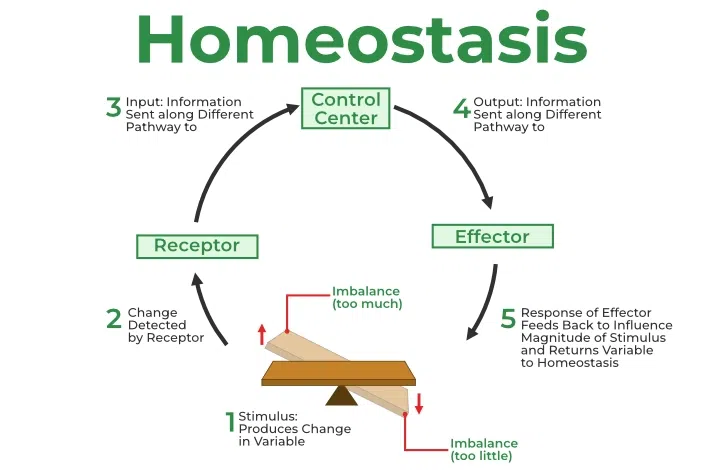
Homeostasis (Physiology)
Homeostasis - Dr Karima Zitouni Session summary Homeostasis is the maintenance of an internal steady state, it comes from two Greek words Homeo meaning "Similar" and Stasis meaning "Stable". The feedback control mechanisms that allow for steady state conditions lie at the heart of physiological control systems. Here, we'll explore some of these negative and positive control feedback loops illustrated by physiological examples such as body temperature and blood coagulation. Learning outcomes By the end of this lecture, students should be able to: Define homeostasis and understand the terms: controlled variable, set point, comparator, error signal, controlling elements and sensors Draw a diagram depicting the major features of a negative feedback loop Draw simple diagrams to illustrate regulation of controlled variables such as body temperature, blood pressure, and plasma cortisol levels Give two physiological/pathophysiological examples where the set point is changed Give two physiological examples of positive feedback control
-
What are the components of a feedback system in homeostatic control mechanisms? (5)
✰Regulated factor/controlled variable (including set point, operating range, and error signal)
✰Detector/sensor (part of the afferent path)
✰Comparator/control center, which determines the set point of the variable, compares it, and maintains the variable at the set point
✰Effector, which returns the variable to the set point (part of the efferent path)
✰Response
-
Picture demonstrating Components of a negative feedback loop – simple system:
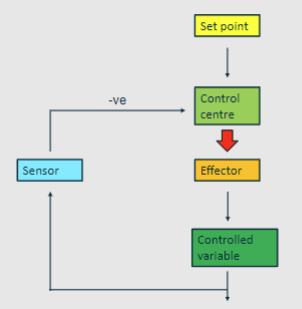
-
Picture demonstrating Elements of a homeostatic negative feedback loop:
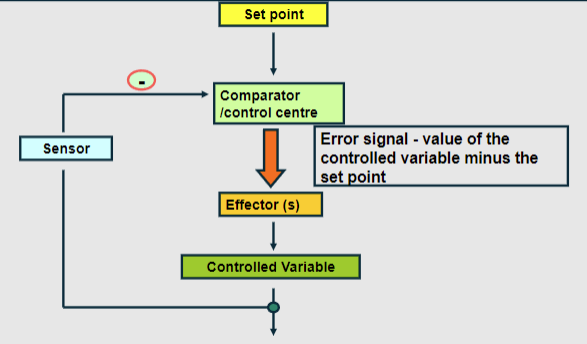
-
Picture demonstrating Elements of a homeostatic negative feedback loop:
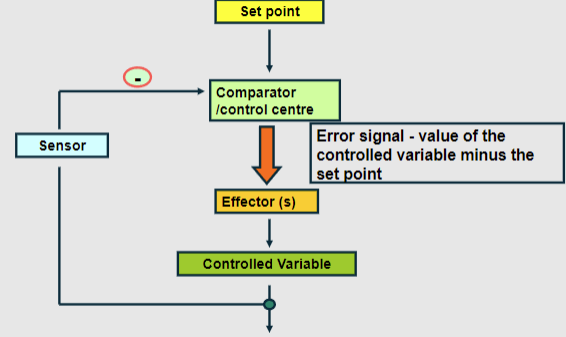
-
Picture demonstrating Elements of the (homeostatic) control of room temperature:
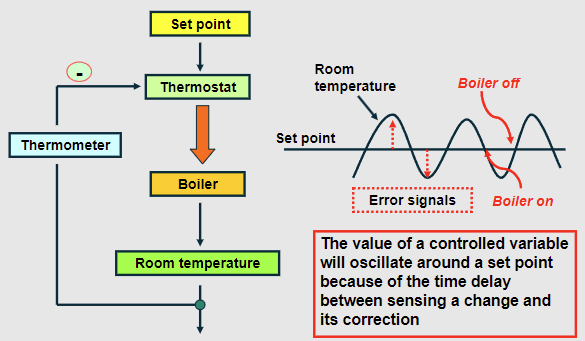
-
Picture demonstrating Components of a negative feedback loop:
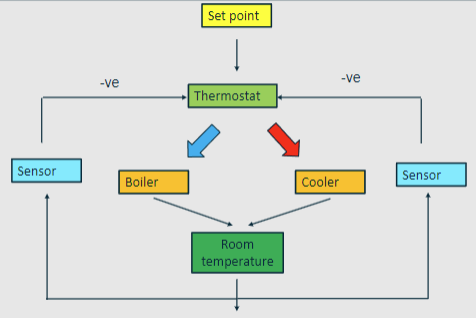
-
What are examples of regulated factors or controlled variables in homeostatic control mechanisms? (5)
✰Blood pressure
✰Core temperature
Circulating concentrations of chemical substances such as:
✰Ions (e.g., Na+, Ca2+)
✰Nutrients (e.g., blood glucose concentration)
✰Hormones
-
How does the body regulate body temperature, and what are the mechanisms involved? (9)
✰Shivering
✰Vasoconstriction
✰Increased metabolism (heat production)
✰Vasodilatation
✰Sweating (heat loss) In an environment that is not thermoneutral, the body utilizes four mechanisms for heat exchange to maintain homeostasis:
✰Conduction: Transfer of heat from two objects (e.g., transfer of heat from skin to chair)
✰Convection: Transfer of heat to the air surrounding the skin
✰Radiation: Transfer of heat via infrared waves (e.g., sun warming the skin)
✰Evaporation: Transfer of heat by the evaporation of water (e.g., sweating)
-
Picture demonstrating Elements of the homeostatic control of core body temperature: negativefeedback control.

-
Picture demonstrating Examples of regulated factors/controlled variables:
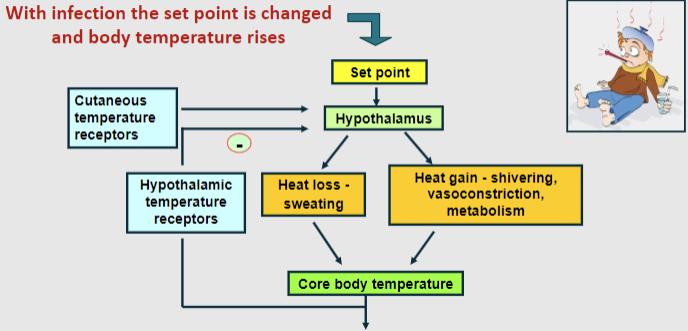
-
What are the benefits of an increase in body temperature? (3)
Benefits of a higher temperature:
✰Inhibits bacterial growth
✰Speeds up metabolic reactions
✰Increases delivery of white blood cells to infection sites
-
How is temperature increased? (3)
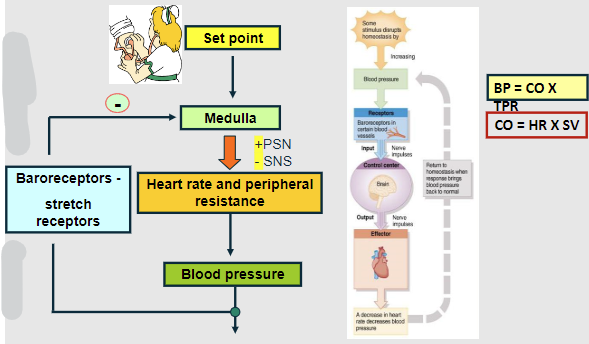
Temperature increased
✰Blood flow shifted to core to conserve heat
✰Increased muscle activity (shivering)
✰Chills stop when high temp reached
-
Picture demonstrating Hypertension:
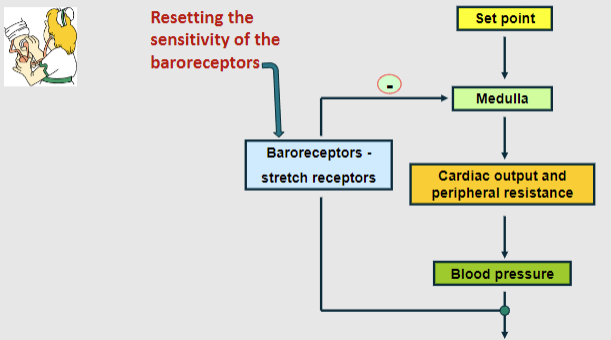
-
Explain the homeostatic control of blood pressure through the baroreceptor reflex. (3)
✰The baroreceptors in the walls of blood vessels (carotid sinus & aortic arch) detect an increase in BP.
✰The brain receives an input and signals blood vessels & heart.
✰Arterioles dilate and HR decreases leading to decreases in BP.
-
Describe the function of the hypothalamic-pituitary axis in hormone regulation. (4)
✰Hormone Synthesis and Release: Neurons in the hypothalamus synthesize and release hormones, such as oxytocin and vasopressin, which are transported to the posterior pituitary gland.
✰Portal Circulation: Other neurosecretory cells in the hypothalamus release hormones into the portal capillaries. These hormones are then transported directly to the endocrine cells of the anterior pituitary gland.
✰Control of Endocrine Gland Function: Hormones released from the anterior pituitary gland regulate the function of various endocrine glands, such as the thyroid, adrenal glands, and gonads, by stimulating or inhibiting hormone secretion.
✰Feedback Mechanisms: The hypothalamus and pituitary gland respond to feedback from target organs and circulating hormone levels to maintain homeostasis in the endocrine system.
-
Picture demonstrating The hypothalamic-pituitary axis:
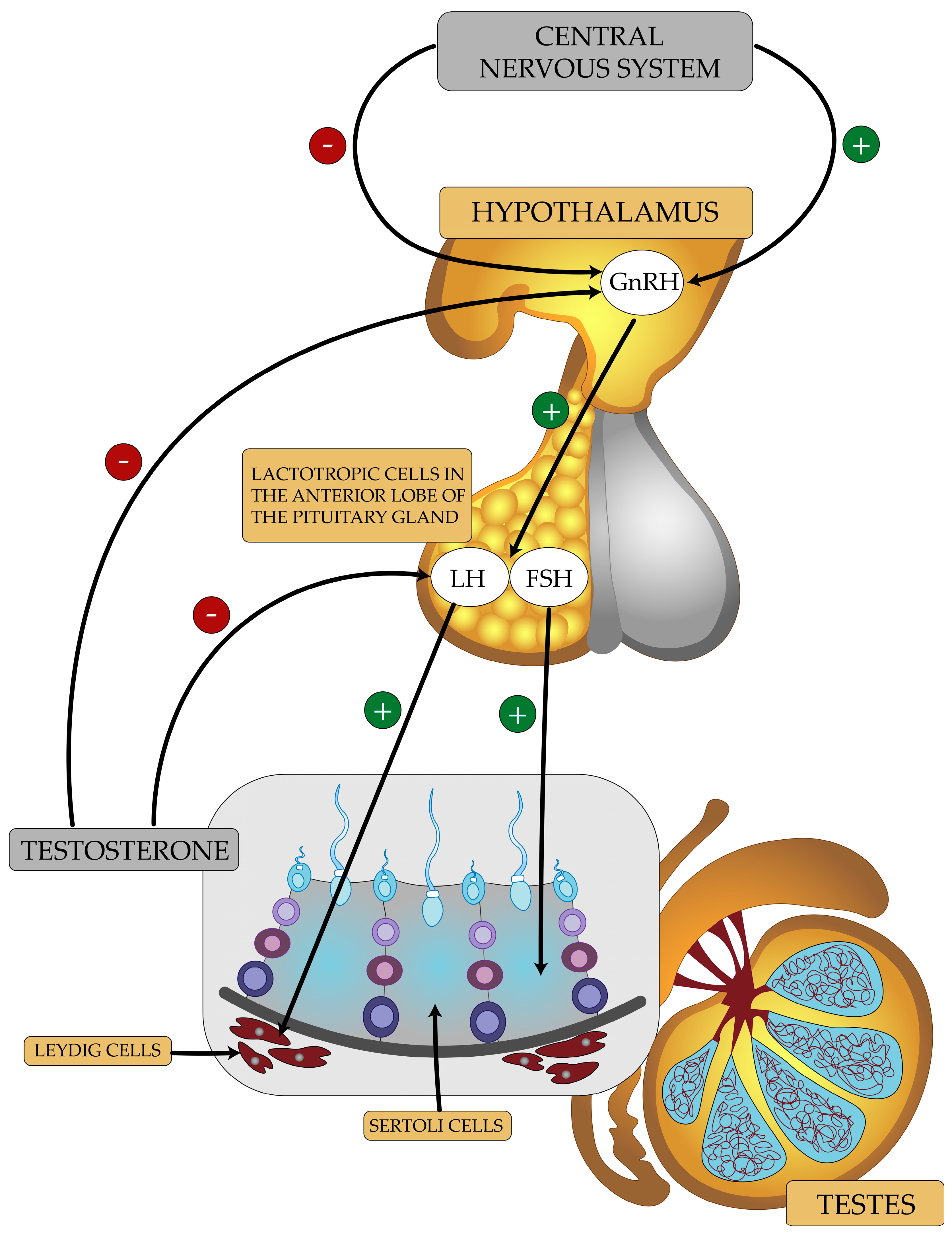
-
Picture demonstrating the Role of vasopressin in the control of blood pressure:
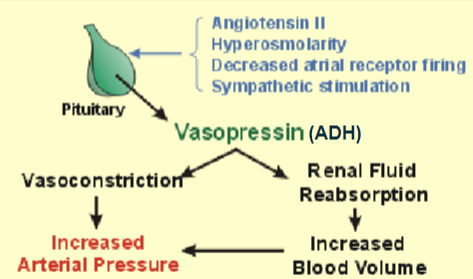
-
What pathways will the body employ to restore BP? (4)
✰Baroreceptor Reflex: Detection of decreased BP by baroreceptors triggers a reflex response involving sympathetic nervous system activation.
✰Sympathetic Nervous System Activation: Leads to vasoconstriction and increased heart rate (tachycardia) to elevate BP.
✰Release of Vasopressin (ADH): Vasopressin is released in response to decreased BP, promoting water retention in the kidneys to increase blood volume.
✰Activation of the Renin-Angiotensin-Aldosterone System (RAAS): Reduced kidney perfusion stimulates renin release, initiating RAAS cascade, resulting in vasoconstriction and sodium/water retention to raise BP.
-
What are the Homeostatic control systems activated after a haemorrhage (2)
After a haemorrhage, blood volume and blood pressure are reduced. Several homeostatic control systems are activated to help restore blood pressure, including:
✰The baroreceptor reflex: It increases cardiac output and total peripheral resistance to elevate blood pressure.
✰Stimulation of vasopressin (ADH) secretion: ADH increases blood volume by promoting water retention in the kidneys, aiding in blood pressure restoration.
-
Picture demonstrating Integrated feedback loops in the control of sodium balance, blood pressure and fluid volume:
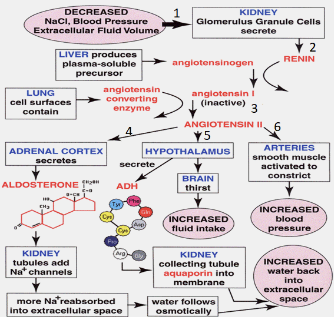
-
How do the Integrated feedback loops control sodium balance, blood pressure, and fluid volume (3)
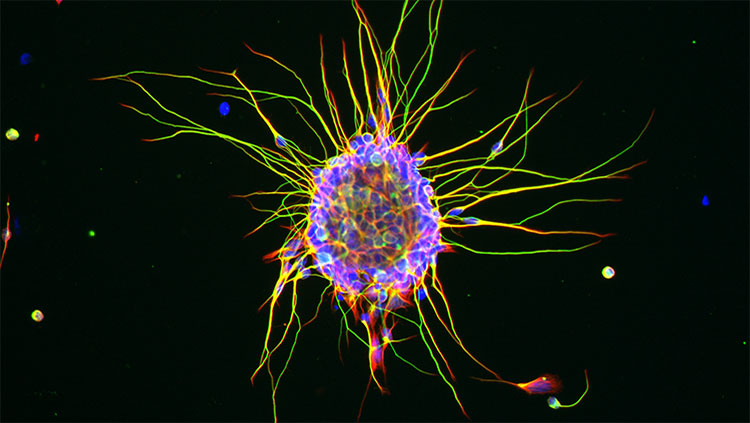
In the regulation of sodium balance, blood pressure, and fluid volume, several integrated feedback loops come into play:
✰Kidneys: The glomerulus or granule cells in the kidney secrete Renin.
✰Renin converts angiotensinogen into angiotensin 1.
Angiotensin 1 is converted to Angiotensin 2 by ACE.
✰Angiotensin 2 has various effects:
a) Adrenal Cortex: Secretes Aldosterone.
b) Hypothalamus: Secretes ADH and acts on the thirst centre in the brain.
c) Smooth muscle cells of the arteries constrict.
-
How does the hypothalamic-pituitary adrenal axis operate? (4)
✰The hypothalamic-pituitary adrenal (HPA) axis operates as follows:
✰Neurons in the hypothalamus synthesize and release hormones from the posterior pituitary.
✰Other neurosecretory cells in the hypothalamus release their hormones into the portal capillaries, which transport them directly to endocrine cells of the anterior pituitary gland.
✰CRH (corticotropin-releasing hormone) stimulates ACTH secretion.
✰ACTH (adrenocorticotropic hormone) stimulates cortisol secretion.
-
Picture demonstrating Control of circulating cortisol concentrations:
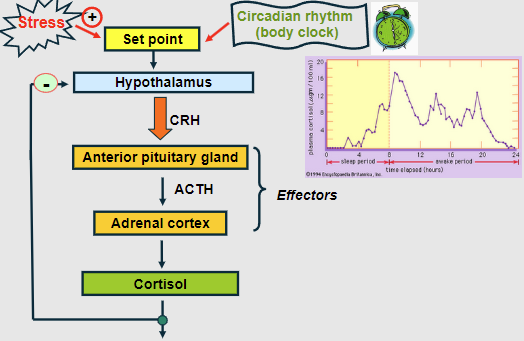
-
Picture demonstraing Control of circulating sex steroid concentrations:
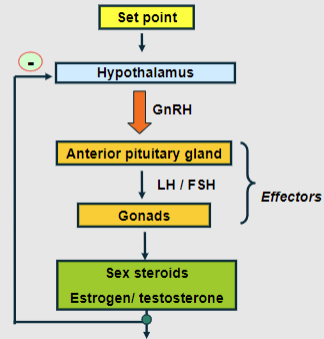
-
How is blood glucose controlled in the body? (3 but elaborate on each)

Blood glucose is tightly controlled in the body through the following mechanisms:
✰Normal Range: The normal range for blood glucose is approximately 4.4 to 6.1 mmol/L (79 to 110 mg/dL).
✰Postprandial Increase: After eating, blood sugar levels rise.
✰Beta cells of the pancreas sense this increase and secrete insulin.
✰Insulin promotes uptake and storage of glucose by adipose tissue, muscle, and liver, leading to a decrease in blood sugar.
✰Fasting Decrease: Between meals, blood sugar levels fall.
✰Alpha cells of the pancreas secrete glucagon.
✰Glucagon stimulates gluconeogenesis, glycogenolysis, and glucose release from the liver, increasing blood sugar levels.
https://www.youtube.com/watch?v=li7SZE61vgA
Heheh ^
-
Picture demonstrating Components of a negative feedback loop controlling blood sugar: ONE
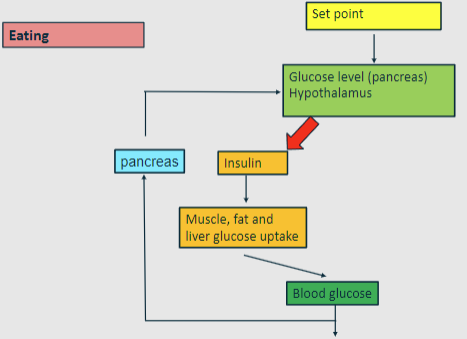
-
Picture demonstrating Components of a negative feedback loop controlling blood sugar: TWO
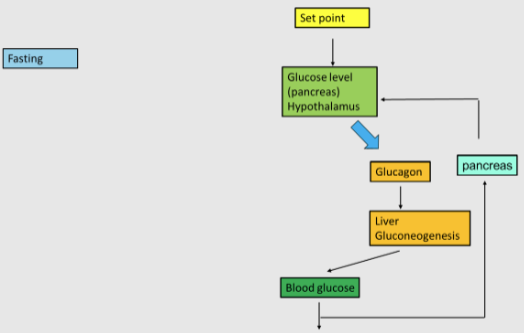
-
Picture demonstrating Components of a negative feedback loop controlling blood sugar: THREE
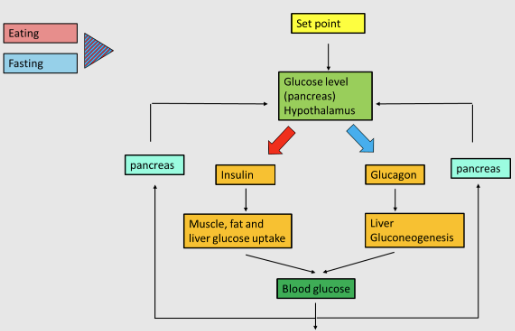
-
Picture demonstrating The principles of negative and positive feedback control:
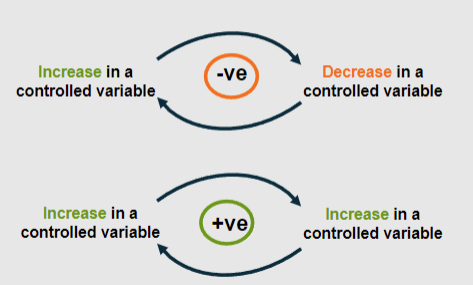
-
Explain positive feedback control in the context of haemostasis. (2)
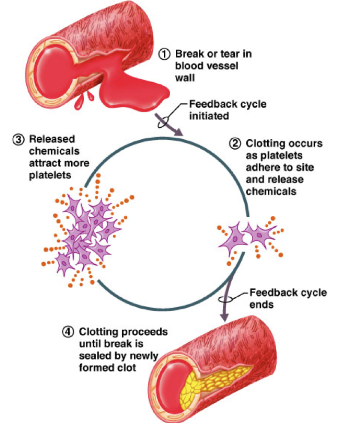
Positive feedback control in haemostasis is characterized by the following:
✰Less Common Physiologically: Positive feedback is less common physiologically because it operates like a "runaway train," with less control compared to negative feedback mechanisms.
✰Reinforcement of Stimulus: In positive feedback, the response of the effector output reinforces the initial stimulus.
Examples include blood clotting, ovulation, and childbirth.
-
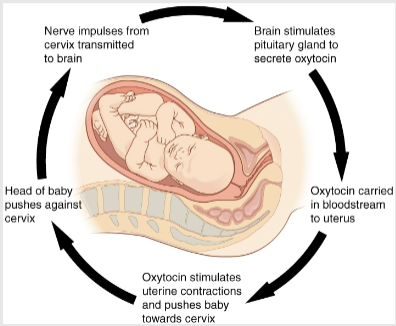
Describe the positive feedback mechanism involved in the control of uterine contractions during labor by oxytocin. (4)
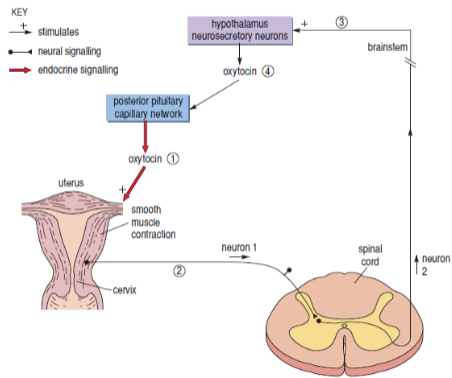
The positive feedback loop controlling uterine contractions during labor by oxytocin involves the following steps:
✰Stimulation of Uterine Muscles: Oxytocin stimulates the contraction of uterine muscles.
✰Cervical Dilation and Activation of Stretch Receptors: As the cervix dilates during labor, stretch receptors are activated.
✰Signaling to the Hypothalamus: Action potentials generated by the stretch receptors signal to the hypothalamus.
✰Further Release of Oxytocin: In response to the signals from the stretch receptors, the hypothalamus stimulates further release of oxytocin, intensifying uterine contractions.

